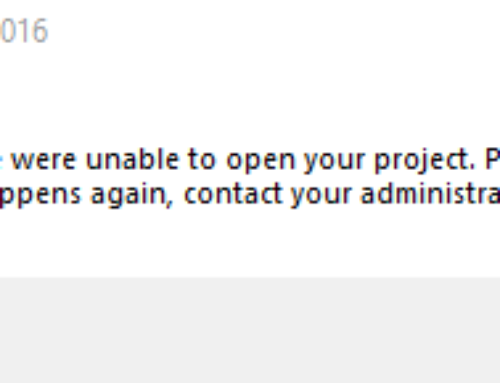Project 2016: Should I Upgrade?
Thanks Brian for posting this – as we continually share information with our readers – here you go. Do you have Project 2016 questions? If so let us know.
Brian Smith – MSFT
Here I am just talking about the desktop product – so Project Standard or Project Professional – and also Project Pro for Office 365. If you have Project Pro for Office 365 then the question of upgrade doesn’t really arise – it is just like any other update that happens with the click to run subscription based products – but it just happens to take you up to a new major version number (The version if you go to File, Account, About… will start with a ‘16’). Some organizations may control when the updates are available for their users – so you may not get it right away.
Hang on – but what if I am using Project Pro for Office 365 because I like the subscription model for the desktop applications but am still using Project Server 2013? No problem. In this release we have both backward and forward compatibility (for now – more later) so you can use the ‘16’ version of Project Pro for Office 365, or even Project Professional 2016 to connect to Project Server 2013. You can even keep your Project Professional 2013 and use it against Project Server 2016 when that comes out next year. You will of course miss out on the new features related to resource management (my earlier blog today) and you won’t get multiple timeline bars if you stick with 2013 – but you will still be able to work! You can even share mpp files between the 2013 and 2016 versions – the 2013 users will not see multiple timeline bars – but will not break them for everyone else – they will just see the tasks on a single timeline bar. They can even edit the timeline and the multiple timelines will still be there for the 2016 users. Very cool! Just in case you haven’t see this new feature – here is an example:
Now you know it is safe to upgrade – and also what features you can expect I will tell you about a couple of things of which you need to be aware.
1. You cannot mix versions if you are running click to run installations – so upgrading an Office ProPlus click to run install from 2013 to 2016 will want to uninstall and 2013 click to run products it finds – such as Project and Visio for example. You will need to update to the 2016 for these too.
2. You cannot mix click to run with msi based installers of the same version. This means you cannot run Microsoft Office 365 ProPlus (which is click to run) with an MSI based installation of Project Professional 2016. You could either change to Project Pro for Office 365, or get a click to run Project Professional 2016.
3. You can mix different versions and different install technologies – so running Project Professional 2013 (msi installation) is fine with Microsoft Office 365 ProPlus (‘16’ level – click to run)
I hope that makes sense – there should be a new KB article coming along that covers this – I’ll add the link when I see it. The 2nd point above also gives an interesting issue if you are in the habit of installing client applications on your SharePoint servers – not generally a good idea, but certainly in support and demonstration environments it can happen. You will find that the SharePoint Server msi based installation will block installing a ‘16’ level click to run – so in this case you might want to use msi versions of Office.
And how do I know if I am running click to run or msi based applications? Click to run will look something like this on the File, Account page (although the set of product icons will be different – this is from our internal deployment at Microsoft):
And msi based tends to look like this:
I mentioned earlier that the backwards compatibility is ‘for now’ – and this was specifically aimed at Project Online users, where we will support the use of Project Professional 2013 connecting to Project Online probably until the fall next year. At that point we will be ensuring all Project Web App instances are activated with the new resource management features so you will need Project Pro for Office 365 or Project Professional to take advantage of them – and we will block the older clients. We will give plenty of notice – I’m sure I’ll do a blog post – and it will also get posted to your message center.
Complete post found here: http://blogs.technet.com/b/projectsupport/archive/2015/09/23/project-2016-should-i-upgrade.aspx
Thanks again Brian.







